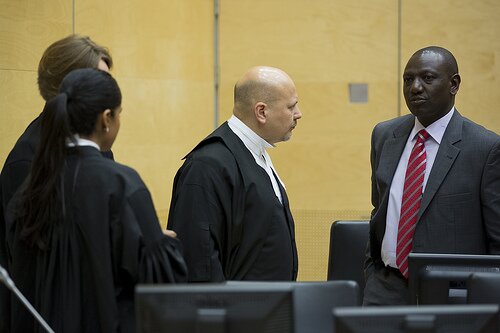Speech at the Human Rights Council of the Syrian human rights organizations on the situation in Syria
Speech at the Human Rights Council of the Syrian Human Rights Organizations on the Situation in Syria
ICTJ World Report: Thursday, 19 September 2013
SJAC Weekly Update: Tuesday, 17 September 2013
ICC Judge Warns Media After Attempt to Expose Witness Indentity in Ruto Trial
By: Dan Krupinsky
Impunity Watch Reporter, Africa
THE HAGUE, Netherlands — The International Criminal Court (ICC) issued a stern warning to the media on Wednesday, after the identity of a witness in Kenyan Deputy President William Ruto’s trial was apparently exposed on social media.

The woman, who was to be known only as Witness 536 for her protection, took the stand on Tuesday as the first witness for the prosecution in the trial of Ruto, accused of crimes against humanity. She testified about an attack in January 2008 by a mob on a church in Kenya’s Rift Valley region, which she and her children survived. The incident left at least 28 people dead.
Because of safety concerns, she testified from behind a curtain, and her image was pixilated and voice distorted on the court video.
However, after her testimony on Tuesday, which was broadcast live on Kenyan TV, speculation began about her true identity on Twitter and other Internet sites. By Wednesday, numerous Twitter posts had supposedly identified her, and one Kenyan blogger and the website of a tabloid newspaper published photographs supposedly of the witness.
The woman in the photograph was identified by name, but the name attributed to her was different than the actual name of the woman in the photograph. So, while the woman in the photograph is not Witness 536, it is still unclear if the reported name of the woman is accurate. But the woman whose photograph is being circulated has asked for police protection.
“The photograph is mine but I have nothing to do with the ICC cases. I am not a witness in any case,” the woman said. “Some began condemning me for going to The Hague to testify even without asking me whether it was true I had gone to testify. I am in shock.”
The woman in the photograph was one of the survivors of the attack on the church, which is likely why she was mistakenly believed to be the witness.
On Wednesday, Presiding judge Eboe Osuji issued a warning to the media that anyone who acts to expose the identities of witnesses in the case will be held in contempt of court, and may face prosecution.
“Let me warn everybody: bloggers, journalists or anyone else intimidating witnesses, that you will be investigated and prosecuted,” Osuji said.
“Revelation of identity of a witness protected by the court is an offense and considered as contempt of court.”
The possibility that the protected identity of a witness has been uncovered after only one day of testimony will undoubtedly make an already difficult case for prosecutors even harder.
Claims by ICC prosecutor Fatou Bensouda of witness intimidation were already being investigated. Because of the controversial nature of the case, many potential witnesses were already scared to come forth. Four witnesses withdrew just before the trial began, with several more following before the prosecution even began its case.
For more on the charges and accusations, please read earlier reports from Impunity Watch.
For further information, please see:
All Africa – ICC Judge Warns Against Exposing Ruto Trial Witnesses – 18 September 2013
BBC – William Ruto trial: Kenyan’s fears over witness claims – 19 September 2013
Human IPO – ICC judge warns Kenyan media and bloggers against exposing Ruto trial witnesses – 19 September 2013
News24 – ICC warns journos after Kenya witness ‘outed’ – 19 September 2013
News Observer – Branded an ICC witness, Kenya woman fears for life – 19 September 2013
UPI – ICC judge: Witnesses names to be kept out of media – 19 September 2013